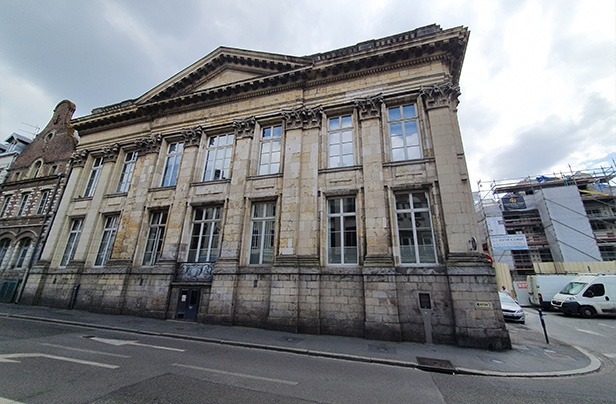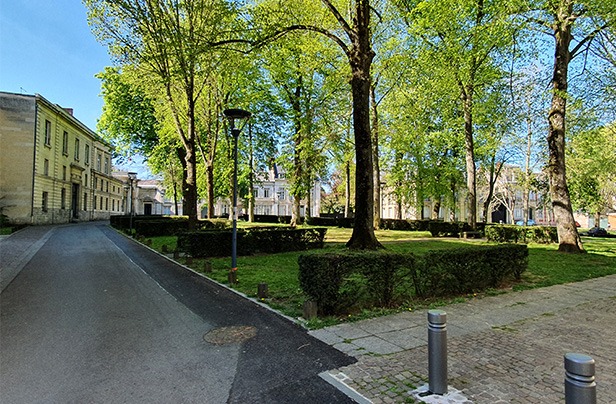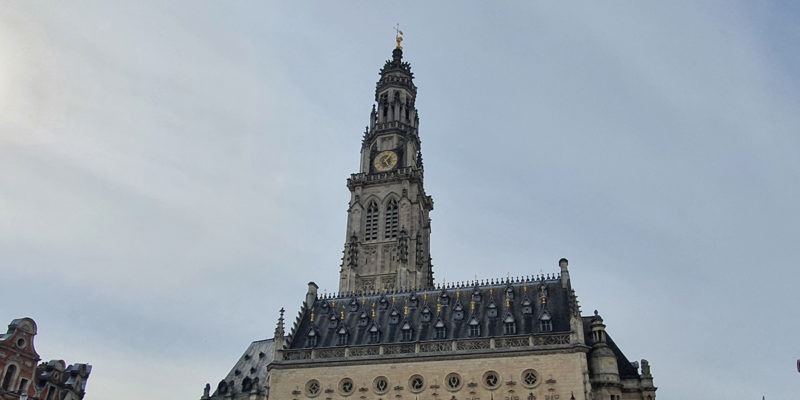We all remember Louis XVI’s convocation of the Estates General in May 1789; and while the whole of France sometimes saw hope in this, Arras was particularly concerned because of its position as capital of the Estates of Artois. In January 1789, Arras-born Robespierre, who already played an important local political role, published“A la nation artésienne, sur la nécessité de réformer les États d’Artois” (To the nation of Artois, on the need to reform the States of Artois). For him, this was a way of denouncing the operation of the provincial institution at the time, but it was the elective nature of Louis XVI’s convocation that led to the historic demise of the États d’Artois. The Duke of Guînes ( then Governor of Artois) withdrew from the election to Versailles, as did Monseigneur de Conzié, already mentioned on our blog. Elected were four parish priests and four nobles: Briois de Beaumetz, Le Sergent d’Isbergues et de Crois, de Lameth. Once again, the judicial professions represented the Third Estate, with Robespierre, Vaillant and Brassart.
A disastrous agricultural situation, as in the rest of the country
In the winter of 1787-1788 and the following year, wheat froze, and the situation in Artois was the same as elsewhere.
Arras, highly dependent on the surrounding countryside, also suffered from a lack of sustenance for the entire population, which saw prices rise. The Oisy-le-Verger abbey was looted in May 1789, and the Arras grain market received military protection. However, the situation calmed down in Arras, as the end of tithing and privileges (August 4) calmed the population. As a result, the capital of the Artois region could be said to have remained rather aloof from events in Paris, and a certain quietude kept the town in order while benefiting from national political and social advances.

Palais de Justice and Place des États d’Artois
Politics : The birth of the municipality of Arras
On December 14, 1789, the Assemblée Nationale decided that each commune had a duty to elect a municipality. Every tax-paying male over the age of 25 (for at least three days’ work) could elect tax-paying candidates (for at least 10 days’ work). On January 25, 1790, Dubois de Fosseux was elected mayor. This was followed by the election of twelve municipal officers, the public prosecutor and his deputy, and the 24 notables of Arrage.

Today’s Place Jean Moulin (Place de la Préfecture)
The French Revolution also saw the creation of the departments of Pas-de-Calais on January 20, 1790. Although Arras was contested by towns such as Saint-Omer and Aire (Aire-sur-la-Lys), it was the former capital of Artois and the States of Artois that was provisionally chosen as prefecture. On July 28, 1790, Arras was confirmed under the impetus of its new mayor and deputies Briois de Beaumetz and Vaillant. However, the Conseil d’Artois was lost in favor of a district court, and the seat of the new constitutional bishop was chosen for Saint-Omer.
Dubois de Fosseux becomes president of the departmental board and is replaced by Fromentin de Sartel as mayor of Arras.
From Freedom to Terror
November 2, 1789 saw the nationalization of church property. This led to major changes for the city of a hundred steeples, including the loss and dismemberment of the old cathedral, next to the present-day Préfecture. Eventually, even though Arras had 11 parishes in all, the French Revolution transformed them into four: Notre-Dame, Saint-Nicolas-sur-les_Fossés, Saint-Géry and , of course, Saint-Vaast. In September 1791, the middle class made its appearance in the municipal elections. Jacobinism was relayed by several groups in the town. Robespierre returned to Artois from Paris for the last time between October 12 and November 23. The Société des Amis de la Constitution (Society of Friends of the Constitution) tried to reinforce the patriotic feeling of the time, and Arras, as elsewhere, celebrated the Arbre de la Liberté (Tree of Liberty) on April 20, 1792. The Société des Amis de la Constitution, which had become a People’s Society, brought even more revolutionary politics to the region, notably with France’s entry into the War and the beheading of Louis XVI. Street names changed, with the Grand’Place being renamed “Place de la Fédération” and Place des Héros “Place de la Liberté”. A revolutionary court appeared in Arras, which became one of the darkest centers of the Terror. Joseph Lebon, a deputy during the Terror, was recalled on July 9, 1794. A few days before Robespierre’s arrest in Paris, the revolutionary tribunal was abolished in Arras, and Lebon was tried and executed in Amiens on October 16, 1795.
The dead during the French Revolution in Arras
The guillotine in Cambrai and Arras was a sad reality of the time. During the Terror, Lebon stepped up the use of the guillotine, bringing 159 people from Arras to the scaffold. In addition, seven prisons in Arras held over 1,300 prisoners, including former mayor Dubois de Fosseux in June 1794. Robespierre’s policies were relayed during this dark period by Joseph Lebon (seen above, one of nine children from a family living in poverty), Augustin Robespierre (the younger brother) and Daillet.
X.D.
